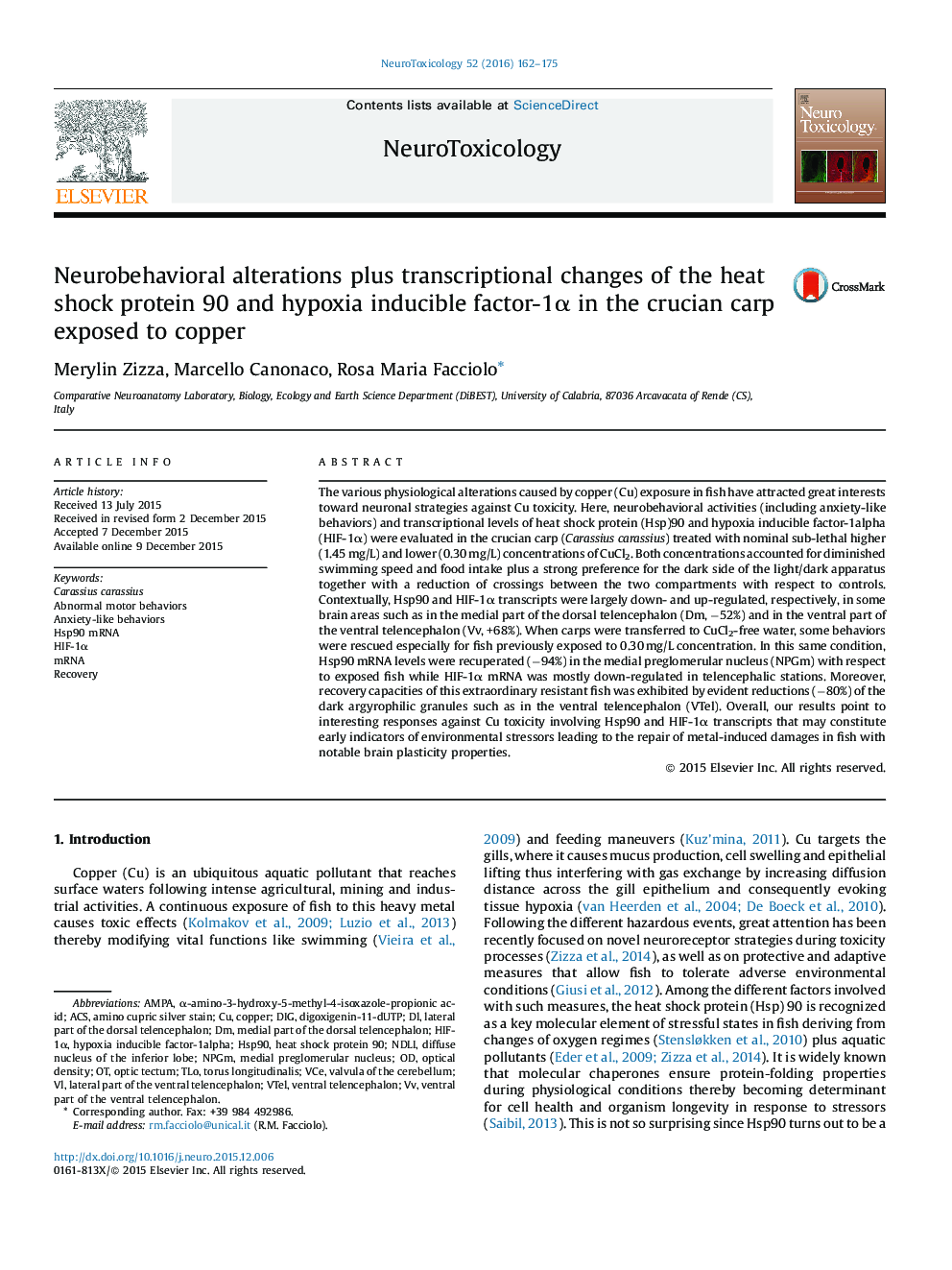| Article ID | Journal | Published Year | Pages | File Type |
|---|---|---|---|---|
| 5854678 | NeuroToxicology | 2016 | 14 Pages |
Abstract
The various physiological alterations caused by copper (Cu) exposure in fish have attracted great interests toward neuronal strategies against Cu toxicity. Here, neurobehavioral activities (including anxiety-like behaviors) and transcriptional levels of heat shock protein (Hsp)90 and hypoxia inducible factor-1alpha (HIF-1α) were evaluated in the crucian carp (Carassius carassius) treated with nominal sub-lethal higher (1.45 mg/L) and lower (0.30 mg/L) concentrations of CuCl2. Both concentrations accounted for diminished swimming speed and food intake plus a strong preference for the dark side of the light/dark apparatus together with a reduction of crossings between the two compartments with respect to controls. Contextually, Hsp90 and HIF-1α transcripts were largely down- and up-regulated, respectively, in some brain areas such as in the medial part of the dorsal telencephalon (Dm, â52%) and in the ventral part of the ventral telencephalon (Vv, +68%). When carps were transferred to CuCl2-free water, some behaviors were rescued especially for fish previously exposed to 0.30 mg/L concentration. In this same condition, Hsp90 mRNA levels were recuperated (â94%) in the medial preglomerular nucleus (NPGm) with respect to exposed fish while HIF-1α mRNA was mostly down-regulated in telencephalic stations. Moreover, recovery capacities of this extraordinary resistant fish was exhibited by evident reductions (â80%) of the dark argyrophilic granules such as in the ventral telencephalon (VTel). Overall, our results point to interesting responses against Cu toxicity involving Hsp90 and HIF-1α transcripts that may constitute early indicators of environmental stressors leading to the repair of metal-induced damages in fish with notable brain plasticity properties.
Keywords
Related Topics
Life Sciences
Environmental Science
Health, Toxicology and Mutagenesis
Authors
Merylin Zizza, Marcello Canonaco, Rosa Maria Facciolo,
